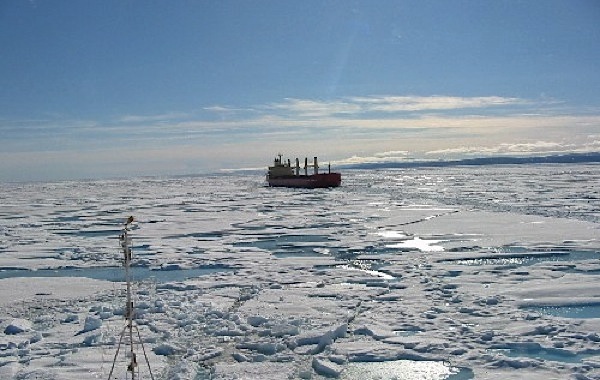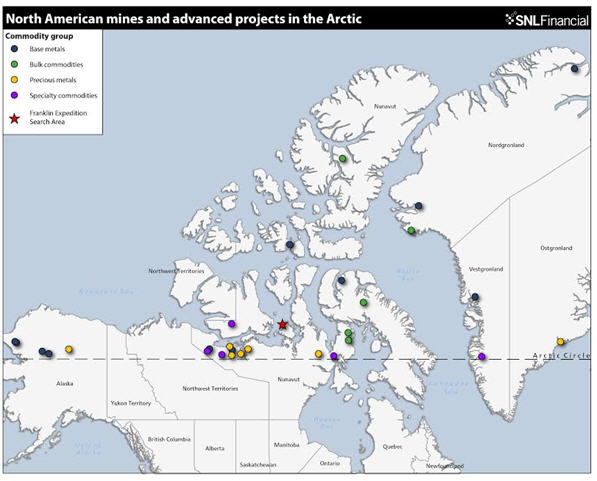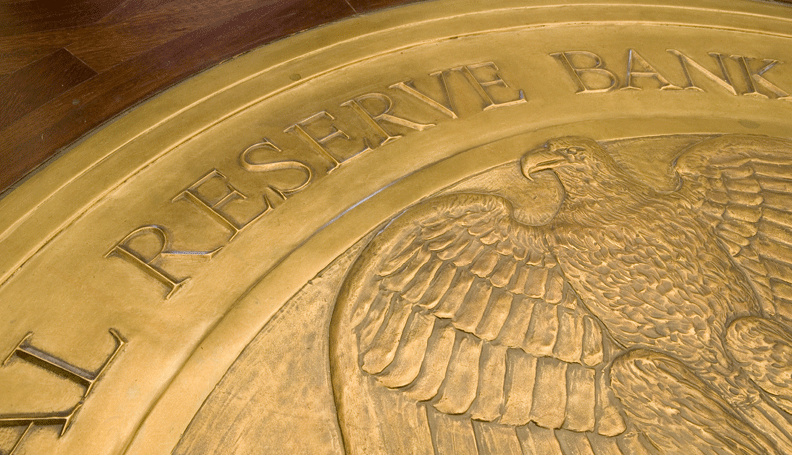Uncovering Canada’s frozen assets
 It is not every day that the Prime Minister of a country takes to the news wires to personally announce the discovery of a sunken ship, especially one that was lost by a foreign nation 169 years ago. But this is no ordinary vessel, and no ordinary location.
It is not every day that the Prime Minister of a country takes to the news wires to personally announce the discovery of a sunken ship, especially one that was lost by a foreign nation 169 years ago. But this is no ordinary vessel, and no ordinary location.
On Sept. 9, Canadian Prime Minister Stephen Harper announced the discovery of one of two ships that comprised Sir John Franklin’s ill-fated expedition in 1845, which aimed to discover a northwest passage across the top of North America.
The expedition’s disappearance, and the fate of the 130-member crew, became one of the great mysteries of Victorian exploration. The original 19th century searches helped open up parts of the Canadian Arctic for discovery, but a sea crossing to the Pacific Ocean was only achieved 58 years later, and much farther north.
The Canadian government began searching for Franklin’s ships in 2008 as part of a strategy to assert the country’s sovereignty over the Northwest Passage, which has recently become more accessible to shipping because of melting Arctic ice. Indeed, Harper has made a point to visit the Arctic annually for the past nine years.
Sonar images from a remotely operated submarine in Queen Maud Gulf show the wreckage of a ship on the ocean floor just off of King William Island, within the Arctic Circle (66.5°N). It is not yet clear whether the ship is HMS Erebus or HMS Terror, but there will be no dispute over ownership; Canada declared the ship’s resting place a National Historic Site in 1992 and the U.K. handed over custody of any discoveries to Canada in 1997.
Although Canada did not gain its independence until more than 20 years after the ships foundered, Harper has credited Franklin’s expedition with “laying the foundation” of the country’s Arctic sovereignty.
The riches to be uncovered promise more than the relics from a Victorian ship or two. The discovery can be expected to boost interest in the whole Arctic region, which encompasses some 20 million square kilometers, representing 6% of the Earth’s surface. The Arctic incorporates territories in eight countries: a small island belonging to Iceland; most of Greenland; Nunavut, the Northwest Territories and Yukon Territory in northern Canada; northern Alaska in the U.S.; northern Russia; and the northern parts of Norway, Sweden and Finland.
Historic northern operations include the Canadian mines of Polaris (75.4°N) and Lupin (65.8°N) in Nunavut, both of which are now closed. The world’s most northerly operations are several coal mines at 77.9-78.2°N in Spitsbergen on Norway’s Svalbard Islands.
The most northerly exploration projects at the moment include Canada Coal Inc.’s Nunavut Coal exploration project at 79.9°N in Nunavut, and base metals exploration at Ironbark Zinc Ltd.’s Citronen property and at privately owned Avannaa Resources Ltd.’s Washington property at 80.2-83.0°N in Greenland’s far north.
Keep reading the full report by clicking here.
More News
Rio Tinto, Founders Factory’s Mining Tech Accelerator invests in startups from US and OZ
April 23, 2025 | 04:02 pm
{{ commodity.name }}
{{ post.title }}
{{ post.date }}




Comments